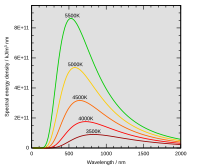
Photo from wikipedia
Mixed convection of nanofluid in a 2D square enclosure with a porous block in its center and four rotating cylinders, which are forced by a simple harmonic function, was studied… Click to show full abstract
Mixed convection of nanofluid in a 2D square enclosure with a porous block in its center and four rotating cylinders, which are forced by a simple harmonic function, was studied numerically. The porous zone was studied by considering the Forchheimer–Brinkman-extended Darcy model. Effects of various parameters including Darcy number (10–5 ≤ Da ≤ 10–2), porosity (0.2 ≤ ɛ ≤ 0.7), Richardson number (0.1 ≤ Ri ≤ 10), and volume fraction of nanoparticles (0 ≤ ϕ ≤ 0.03), on heat transfer, entropy generation, PEC, velocity, streamline and isotherm contours were demonstrated. The results show that decreasing the Darcy number as well as reducing the Richardson number leads to an increase in the average Nusselt number. However, porosity changes had no decisive effect on heat transfer. Maximize the volume fraction of copper nanoparticles in the base fluid enhanced heat transfer. In the case of the high permeability of the porous medium, the impact of the harmonic rotation of the cylinders on the flow patterns became more pronounced.
Journal Title: Scientific Reports
Year Published: 2021
Link to full text (if available)
Share on Social Media: Sign Up to like & get
recommendations!